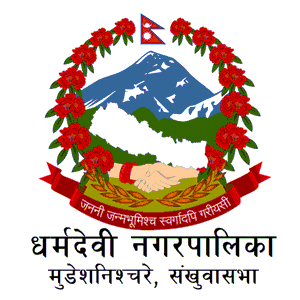Overview
Banaganga Municipality (Banaganga Nagarpalika), Kapilvastu, Lumbini Pradesh is a region of significant strategic importance, encompassing historical, religious, tourism, and commercial aspects. Geographically, it is situated between 27 degrees 35 minutes to 27 degrees 48 minutes north latitude and 83 degrees 03 minutes to 83 degrees 14 minutes east longitude. This municipality holds a vital place on the world map due to its unique location and diverse attributes.
Boundaries and Surroundings
- North: Bordered by Sittganga Municipality of Arghakhanchi District.
- West: Bordered by Buddhabhumi Municipality and Kapilvastu Municipality of Kapilvastu District.
- East: Bordered by Sainamaina Municipality and Kanchan Municipality of Rupandehi District.
- South: Bordered by Mayadevi Rural Municipality and Suddhodhan Rural Municipality of Kapilvastu District.
- Southeast: Bordered by Gaindahawa Rural Municipality of Rupandehi District.
Dimensions
- Average Length (East-West): 22 kilometers.
- Average Width (North-South): 14 kilometers.
Climate
Banaganga Municipality experiences a tropical climate, influenced by its geographical location and topographical features. The area typically sees mild winters and hot summers. The climate of Nepal varies across different regions due to altitude and terrain, and the region of Kapilvastu District is characterized by a warm climate.
- Rainy Season: Begins in Jeth and lasts until Kartik.
- Winter Season: Starts in Mangsir and extends until Baisakh.
Temperature
Between 2005 and 2014, the region's average monthly maximum temperature ranged from 16.9°C in January 2010 to 40.6°C in April 2014. The average minimum temperature during the same period varied from 6.9°C in January 2013 to 27.7°C in September 2007.
Topography
Geographically, Banaganga Municipality is spread across the Terai and Siwalik regions, lying between latitudes 27°34'20.7" to 27°46'58.61" and longitudes 83°4'1.99" to 83°13'53.74". The area extends from 105 meters to 495 meters above sea level, encompassing a diverse landscape.
Cultural Excellence
Nepal is globally recognized as a major tourist destination, known for its unique natural beauty, rich biodiversity, and cultural heritage. The country is home to multiple ethnic groups, languages, religions, and social diversity, contributing to its cultural richness. Nepal's historical and cultural heritage, along with its stunning natural landscapes, makes it a prominent location on the world tourism map.
In the era of rapid advancements in science, technology, and communication, the world is becoming increasingly interconnected. Nepal must leverage its national heritage to attract global tourism, thereby enhancing its capacity to benefit economically. The tourism industry is a crucial pillar of the national economy, and its diversification and expansion are essential for improving the livelihoods of the general population and increasing employment opportunities.
To achieve this, it is imperative to preserve and promote Nepal's diverse heritage while developing the necessary infrastructure, including international air transport services and other tourism-related facilities. Enhancing the quantity and quality of tourism services and industries is vital for the sustainable development of Nepal's tourism sector.
Historical and Religious Significance
The municipality was officially declared by the Government of Nepal on 2071/8/16, following a decision by the Council of Ministers. The formation of Banaganga Municipality involved the merging of several former Village Development Committees (VDCs), namely Banaganga, Hatausa, Patna, Gajehada, Kopawa, Motipur, and Bhalwad, all within Kapilvastu District. The name "Banaganga" derives from the Banaganga River, an area rich in irrigation and symbolic of the ancient Bhagirathi River.
The Banaganga River carries immense historical and religious significance, believed to be a creation of Lord Ramchandra during his exile. According to legend, he shot an arrow into the ground to bring forth a spring of water, which eventually formed the river. This act gave the river its name, making it a site of profound reverence. The municipality is also home to numerous sacred sites, including the hermitage of Sage Kapilmuni, Shringighat, Madhuwandham, Lakshmanghat, and Vargaddi Ghat, further adding to its historical importance.
Geographical Location
Banaganga Municipality is strategically bordered by several key regions. To the east, it is flanked by the Kothi River, the Saljhandi forest, and Rudrapur VDC of Rupandehi. The western boundary is marked by the Koili River, Buddhabhumi Municipality, and the Gorusinghe forest. In the north, it is bordered by Sittganga Municipality of Arghakhanchi District, while the southern boundary meets Niglihawa, Jahadi, and Mayadevi Rural Municipalities of Kapilvastu Municipality. The municipality is located 15 kilometers north of the district headquarters, Taulihawa.
It is a region of significant geographical importance, positioned between latitudes 27°34'207" to 27°46'5861" and longitudes 83°4'199" to 83°13'53.74". The municipality covers an area of 233.63 square kilometers and lies at an altitude ranging from 105 meters to 495 meters above sea level.

Major Settlements by Ward:
Ward No. 1:
- Uttamnagar, Bairiya, Nibuwa, Baithanpura, Mandreli Tol, Shanti Tol, Shreenagar Danda, Jitpur, and Bungchi.
Ward No. 2:
- Nandanagar, Rajpur, Tapke, Baijalpur, Uttar Pipra, Dakshin Pipra, Colony Tol, Govadiya, Kapteya, Gabdiya, Lakhanpara, Kuneya, Tinaiya, and Bishanpura.
Ward No. 3:
- Siuti, Karmahana, Tilkahana, Babhani, Rajapani, Bhaktauli, Dhankouli, Junga, Gangoliya, Thanti, and Chamkipur.
Ward No. 4:
- Gajehda, Sainik Tol, Golden Horizon Chowk, Tinkune, Kalabanjar, Thakurapur, Mathillo Thakurapur, Niviya, Lakhrauwa, Kuberapur, Bhunga, Tallo Bhunga, Ittabhatti Chowk, Hariharpur, Mathillo Hariharpur, Shivalaya, Dugahwa, Saaldada, Shanti Dada, Siddhipur Bazaar, Siddhipur, Purano Tol, Darkhast Gaun, and 4 No. Bazaar.
Ward No. 5:
- Shreenagar Tol, Vyada Tol, Shanti Tol, Madhauliya Tol, Materia, Bhatta, Durgai Nagar, Itta Bhatta, Dakshin Tol, Simalkhor, School Tol, Khutani, Loharibagiya, Satmohane, Baikunthpur, Jhanda Gaun, Farwar, Vidhyalaya Tol, Pathraiya Tol, Sundarnagar, Naya Tol, Aurahiya, Kopawa Gaun, Bagahwa, Jholanipur, Kopawa Bazaar Line, Annapurna Tol, and Pratidaada.
Ward No. 6:
- Baidouli, Jhulanipur, Suthouli, Banakasiya, Deurali Tol, Banakasiya Tharu Tol, Bhat Sukumbasi Tol, Amouli, Tingherwa, Phulawari Tol, Bhagalpur, Mandir Tol, Pipariya Tol, Manoharapur, Ganeshpur, Gandharva Tol, Pratidaada, and Lakshman Ghat.
Ward No. 7:
- Banrahwa, Naya Gaun, Vagnahwa, Bhuiipura, Badi Gaun, Koili Banagai, Uttar Tharu Gaun, Naya Tol, Motipur Daada, Motipur, Khadhur Paila, Dhaireini Daada Kha, Mandir Tol, Banagai, Shanti Tol, Gherwa Banagai, Pani Tanki Tol, and Tingherwa.
Ward No. 8:
- Bodgaun, Balapur, Shisheni, Dhaneshpur, Chappar Gaun, Gansahwa, Dhodekol, Banigaun, Udayapur, Kukurghola, Mormi, Koilipar, Bandoiuli, Udayapur, Lougai, Madhuwan, Banaganga Pulchowk, Banaganga Crusher, Madhuwan, and Bandoiuli Bhata.
Ward No. 9:
- Chawaha, Bhalwad, Bardahwa, Bakshispur, Jinuwa, Purba Jinuwa, Paschim Jinuwa, Padariya, Bhartipur, and Bhalivas.
Ward No. 10:
- Bhawpur, Bhagwanpur, Pakadichhapa, Jaipura, Bahadurpur, Gogapur, Birpur, Sonpur, Motipur, Dharampur, Balapur, Danapur, Pipra, Majhawa, Thulo Thekahi, Sano Thekahi, Karailiya, Mechakuri, Mechakuri Daada, Patna, Ahirauli, Banagwa, Rattanpur, Galha, Sano Galha, Thulo Galha, and Naugaia.
Ward No. 11:
- Hathausa, Mainhara, Mairi, Deuwapar, Odari, Marthi, Project Tol, Gharbudhiya, Bhadsarwa, Bankatwa, Bhaddihwa, Dakshin Chetia, Uttar Chetia, Chitarpura, Barwa, and Padampur.
Demographics
According to the 2078 census, Banaganga Municipality comprises 23,325 households, with a total population of 96,714. The demographic distribution includes 51,307 females and 45,407 males. The municipality is a melting pot of various ethnic groups, including Tharu, Brahmin, Chhetri, Gurung, Magar, Dalit, Yadav, and Muslims. This diverse population engages in a range of occupations, such as agriculture, commerce, industry, employment, and wage labor.
Agriculture and Economy
Agriculture is a primary occupation in Banaganga Municipality, with residents involved in the cultivation of rice, maize, wheat, mustard, and various livestock farming activities. Fish farming, poultry, beekeeping, and other forms of animal husbandry are prevalent, contributing significantly to the local economy. The municipality is known for its rich agricultural output, which supports both the local and surrounding regions.
Educational Infrastructure
Banaganga Municipality boasts a robust educational infrastructure, with 83 educational institutions operating under both government and private sectors. Among these, 49 are government schools, which include 5 community and religious schools. Additionally, there are 8 community-run child development centers and 26 private schools. Panch Basic School in Baijalpur, Banaganga-2, stands out as a model child-friendly school within the district and has earned the National Cleanliness Award. Religious education is also well-represented, with institutions like Manakamana Sanskrit Vidyapeeth, Gurukul schools, and Madrasas contributing to the educational landscape.
Literacy and Educational Attainment
The municipality has a commendable literacy rate of 81.4%, significantly higher than the district's average literacy rate of 70.69%. This higher literacy rate is indicative of the municipality's emphasis on education and its commitment to improving educational outcomes for its residents.
Conclusion
Banaganga Municipality is a region of diverse and strategic importance, blending historical reverence with modern development. Its geographical significance, coupled with its rich cultural heritage and thriving agricultural economy, makes it a unique and vital part of the Kapilvastu District. The municipality's commitment to education and its high literacy rate further underscore its role as a beacon of progress in the region.




